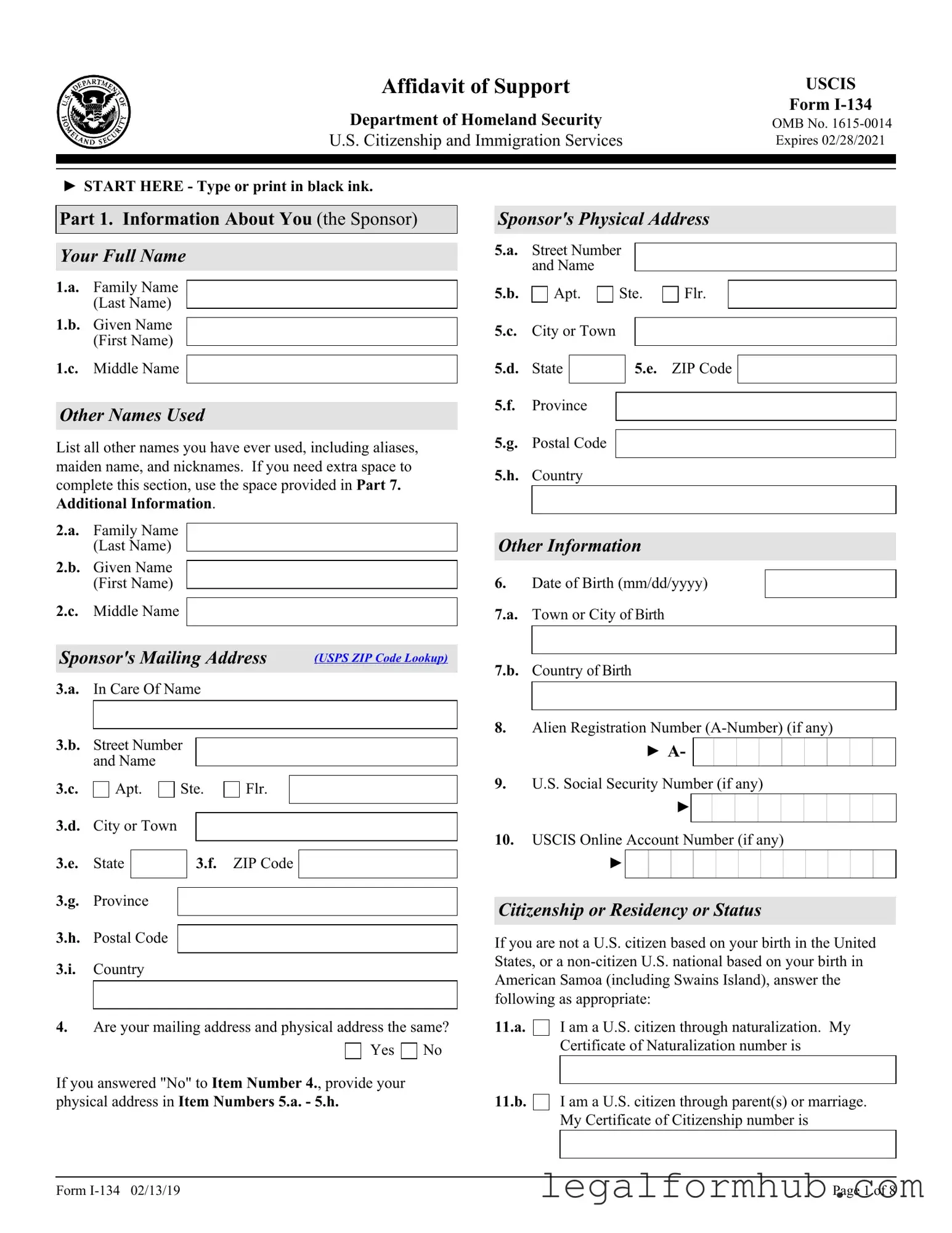The USCIS I-134 form, known as the Affidavit of Support, serves as a commitment from a sponsor to financially support a visa applicant. A similar document is the I-864 form, also an Affidavit of Support, but it is used in family-based immigration cases. The I-864 requires sponsors to demonstrate that they have sufficient income or assets to support the immigrant, ensuring that the immigrant will not become a public charge. Both forms aim to show financial stability, but the I-864 has stricter income requirements and is legally binding.
Another document similar to the I-134 is the I-130 form, Petition for Alien Relative. While the I-134 focuses on financial support, the I-130 is used to establish a family relationship between a U.S. citizen or lawful permanent resident and a foreign relative. The I-130 is essential for initiating the immigration process, but it does not directly address financial obligations like the I-134 does.
The I-129F form, Petition for Fiancé(e), is also comparable. This form is filed by a U.S. citizen to bring a fiancé(e) to the United States for marriage. Like the I-134, it requires a demonstration of the relationship and intent to support the fiancé(e) upon arrival. However, the I-129F is specifically for fiancé(e) visas, while the I-134 can be used for various visa categories.
The I-751 form, Petition to Remove Conditions on Residence, shares similarities as well. This form is filed by conditional residents who obtained their status through marriage. It requires evidence of the ongoing relationship and may include financial support documentation. While both forms focus on relationships, the I-751 is concerned with maintaining residency status rather than initial entry into the U.S.
The I-140 form, Immigrant Petition for Alien Worker, also resembles the I-134 in that it involves support for an immigrant. The I-140 is filed by an employer on behalf of a foreign worker. It requires proof of the job offer and the worker’s qualifications. Although it does not directly involve personal financial support like the I-134, it ensures that the immigrant has a job waiting upon arrival.
The DS-260 form, Immigrant Visa Electronic Application, is another document that aligns with the I-134. This form is completed by individuals applying for immigrant visas. It collects personal information, including financial information. While the DS-260 focuses on the visa application process, it also requires applicants to demonstrate financial support, similar to the I-134.
The N-400 form, Application for Naturalization, is relevant as well. This form is used by lawful permanent residents to apply for U.S. citizenship. It requires applicants to provide information about their financial status and support obligations. While the focus is on citizenship rather than immigration, both forms require an understanding of financial responsibilities.
For those looking to ensure a successful transaction, understanding the importance of the complete motorcycle bill of sale process is vital. This document serves as proof of ownership transfer between the buyer and seller.
The I-765 form, Application for Employment Authorization, shares a connection with the I-134. This form allows certain immigrants to apply for work authorization in the U.S. While the I-134 demonstrates financial support for an immigrant, the I-765 enables the immigrant to gain financial independence through employment.
The I-485 form, Application to Register Permanent Residence or Adjust Status, is another document that relates to the I-134. This form is used by individuals already in the U.S. who wish to become lawful permanent residents. It requires evidence of eligibility, including financial support, similar to the I-134’s purpose of ensuring that the immigrant will not require public assistance.
Lastly, the G-325A form, Biographic Information, is similar in that it collects personal information about the applicant. While it does not directly address financial support, it is often required in conjunction with other forms, including the I-134, to provide a complete picture of the applicant’s background and circumstances.
